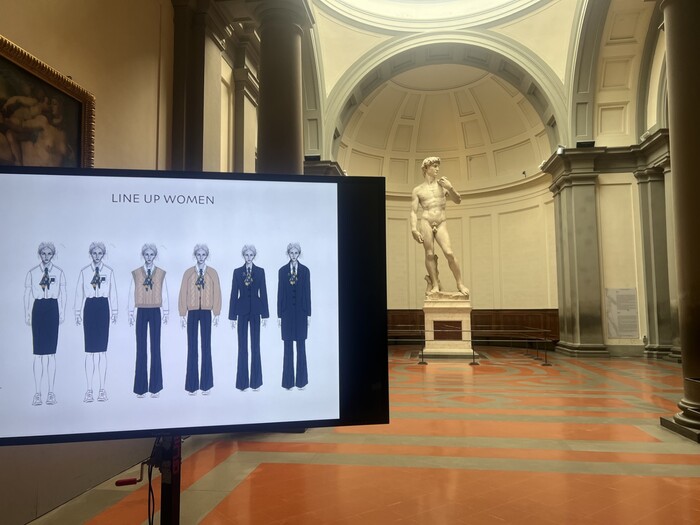Enlarge image
The insects from the collection of the Natural History Museum in Berlin are to be transferred to the digital world
Photo: Lena Giovanazzi / DER SPIEGEL
In one of thousands of drawers in one of hundreds of cupboards, a greenish shimmering beauty bee is waiting to become immortal.
She has been dead for a very long time. 120 years ago a German explorer put an end to her life in a South American port city by piercing her shiny body with a needle.
Your electronic copy should be created in the next few weeks.
This digital twin, a bee made of bytes, is to become part of a natural history database that could revolutionize biological science.
With this major project, the Museum für Naturkunde in Berlin wants to find answers to questions that collections are grappling with around the world: How can the zoological treasures archived there be transferred into the digital sphere?
How can researchers worldwide get access to it?
And what requirements have to be met so that new knowledge can be gained from it?
Around 30 million objects are stored in the cupboards, cellars and showcases of the Berlin Natural History Museum. There are 2.3 million objects from the hymenoptera group alone, including the colorful splendor bee. Most of this collection is largely closed to the scientific community. Only a few researchers can afford to travel to Berlin to count dried digger wasps there. It is possible to send objects. Or you can ask museum staff for recordings. Neither is particularly practical. The digitization of dead animals could bring a breakthrough for research.
"The goal is a virtual world collection," says biologist Christiane Quaisser. "It's about our global heritage, which we want to preserve and share." Quaisser heads the project together with Jana Hoffmann. The digitization of the hymenoptera collection is a worldwide unique pilot project.
The heart of the system is in the middle of the room and attracts attention every few seconds with a bright flashlight.
A robotic arm holds a ring up above a conveyor belt, which is connected to several cameras.
What can be seen here is the prototype of a digitization route for insects that can capture up to 5000 objects per day.
"There is no machine like this anywhere else," says Bruno Giebels, head of the Picturae company.
His company made the equipment especially for the major project.
Within the next six months, an image of 500,000 insects from the museum's collection is to be created from 60 megapixels each.
Every day, 3.5 terabytes of data are created
At the beginning of this automated process there is manual work.
On the long side of the room, with a view of the Brachiosaurus shins in the dinosaur room opposite, employees in white coats sit at tables lined up and pick insects from the boxes with their pointed fingers.
Then they sort the insects into cardboard boxes according to their species, which in turn move into boxes in meaningful groups.
Enlarge image
Elena Grigoryeva is the project manager for the development of the hymenoptera collection
Photo: DER SPIEGEL
Jan-Arie Karels from the Netherlands is Head of Research and Development at Picturae. He is also present that morning and demonstrates how the insect street works: He carefully takes an insect out of its box and sends it on its journey into the light. The insect is photographed three times, from the front, from the side and from above. The high-resolution cameras take 30 pictures from every perspective in one second. The computer then compiles three perfect images from this, with the greatest possible depth of field at each point. Because the cameras are suspended so that they can move, they can be adjusted to the size of the respective object, up to a maximum of eight centimeters. The museum will need other facilities for larger animals that are to follow in the coming years.
After scanning the insect, Karels carefully puts it back in the box.
The entire run takes no more than two minutes.
Every day, 3.5 terabytes of image data are created, which the hymenoptera record down to the smallest detail, down to the delicate veins in the transparent wings, down to the sharp-edged jaws and the shimmering compound eyes.
"The quality of the pictures is fantastic," says Hoffmann.
And company boss Giebels raves: “That opens up a new world.
You see better than you could ever see with the normal eye. "
The museum beetle is dangerous to its dead relatives
Preserving natural history collections poses special challenges. It is no different with a collection of insects. For optimal shelf life it must not be too cold, not too warm, not too damp, too dry, but also not because old boxes will otherwise become brittle and cracked. "Friends" could be particularly dangerous to the insects, as the museum staff explain: living insects that get into the boxes through cracks and crevices and enjoy their dead relatives. This penchant for insects has even given its name to one of these insects: museum beetles. As a result, you need good boxes, sturdy cabinets - and lots of space.
So after digitization, could a few of the flies or wasps be disposed of?
For the museum staff, the question sounds like sacrilege.
Digital capture is an additional way of preservation, not an alternative, says Hoffmann: “What is created here is just an image.
That doesn't include the DNA sequence or the microbiomes on the surface. ”And in just a few years there could be much more modern imaging processes for which the original is absolutely necessary.
Quaisser agrees: "The knowledge of the object is infinite."
Each object stands for an excerpt from the past
The knowledge of the object - that's what it's all about.
Every object in the museum's collection, every bee, every wasp, every winged ant, represents a small excerpt from the past.
And as a whole, these excerpts allow a glimpse into the future.
The Museum für Naturkunde wants to use the data generated by the digitization route to build a freely accessible data portal, preferably within the coming year.
That would be a huge asset for zoological research.
Scientifically exciting objects can be examined simultaneously by researchers all over the world.
In the case of the insect collection, for example, these are animals with which a species has been described for the first time.
"The original meter of a kind," Hoffmann calls it.
Often it is already possible today with image recognition software to determine the species belonging to an insect in a matter of seconds. In the hymenoptera, for example, the pattern of the veins on the wings is a possible attribute. Such a method saves a lot of time in the species-richest animal class.
A database that records the insects from around 200 years of collection history could also make it easier to identify evolutionary developments, including changes in biodiversity.
Knowledge of species that lived in a certain place at a certain point in time provides information about the overall state of the insect population.
About their prosperity, about their disappearance, about the progression of insect death.
The investigation of time series can make connections visible: Does the disappearance of a species coincide with the appearance of a new forage plant?
Or with the use of a pesticide?
Christiane Quaisser says: "We are on a journey into the future." A sentence that is rarely heard in a natural history museum.
Visitors can observe the process of insect digitization live: on October 27, the museum will open the exhibition "digitize!"








